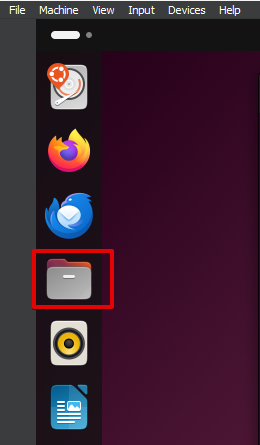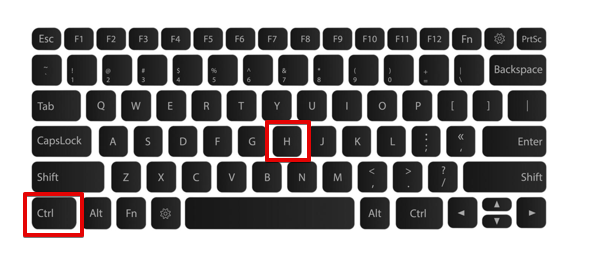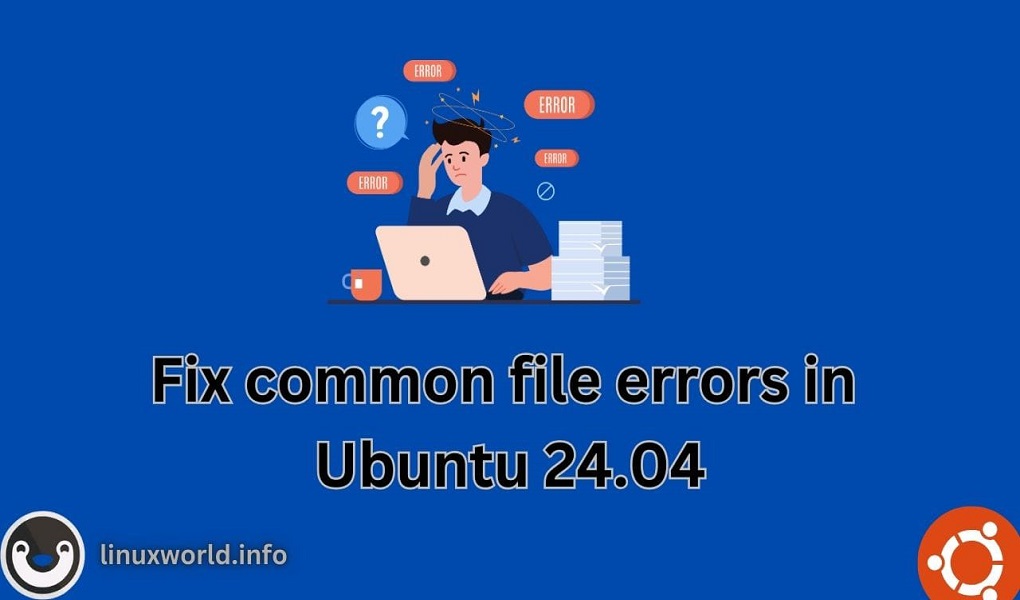Have you ever been stuck dealing with file-related issues while using Ubuntu 24.04 LTS? You’re not alone! Even the most capable users can encounter file errors that disrupt their workflow. From permission problems and missing files to read-only file systems, these issues are a part of everyday computing and can be resolved with the right approach.
Ubuntu 24.04 LTS is designed to be a powerful and reliable system, but navigating file errors effectively require understanding and troubleshooting techniques. This guide will walk you through common file-related challenges and provide practical solutions to help you resolve them. Whether dealing with access permissions, locating misplaced files, or handling system constraints, these insights will empower you to maintain a smooth and efficient workflow in Ubuntu.
How To Fix Common File Errors in Ubuntu 24.04 LTS?
In this guide, we’ll explore a variety of scenarios, including:
- Permission Errors: Learn how to adjust file permissions to ensure you have the right access.
- File Not Found Issues: Discover how to locate missing files and correct path errors.
- Read-Only File Systems: Find out how to remount file systems that are preventing modifications.
- Hidden Files: Understand how to view and manage files that are hidden from the default view.
- Ownership Problems: Get tips on changing file ownership to resolve access issues.
With these tips, you’ll be able to fix file problems quickly and keep your Ubuntu system running smoothly.
Error 1: File Permissions Errors
Step 1: Identifying the Issue
When you have trouble modifying files, it’s often because of incorrect permissions. You might see an error message that says Permission denied.

Step 2: Checking Permissions
To verify file permissions, use the following ls command:
ls -l filename
The file’s current permissions are listed by this command.

Note: Permissions are typically represented as a three-digit number:
Read (r): Allows viewing the file content.
Write (w): Allows modifying the file content.
Execute (x): Enables the file to be run as a program.
Step 3: Solution
To change file permissions and resolve access issues, use the chmod command. For instance:
1. Set Exact Permissions
To set exact permissions, use a numeric mode:
chmod 755 filename

The author of the file is given read, write, and execute access using this command; others are simply granted read and execute permissions.

Note: Adjust permissions based on needs, such as chmod 644 for read and write by owner only or chmod 777 for full access for everyone.
Tip: Use numeric permissions to quickly set multiple access levels in one command.
2. Add Specific Permissions
To add specific permissions without affecting existing ones, use the + symbol:
chmod +x filename

Adds execute permission for all users (owner, group, others).
Note: To remove certain rights, use the command chmod – followed by the permission symbols r (read), w (write), or x (execute).
Also, for more precise control over file permissions, you can use symbols like u (user/owner), g (group), and o (others) along with + or – to add or remove permissions for specific categories. For example,
chmod u-w filename
The above command removes write permissions from the file’s owner only.

Tip: Symbolic permissions are useful for modifying specific permissions without changing others.
Error 2: File Not Found
Step1: Identifying the Issue
Errors like file not found indicate that the specified file or directory doesn’t exist at the given path.

Step 2: Solution
Ensure there are no typos or incorrect directories. Correct any mistakes in the path. If the file was mistakenly moved, use the search file results to navigate to its new location.
To locate the file, use:
find / -name filename
This searches the entire file system for the file, helping you find the correct location.

Searching in Specific Directories
If you have an idea of where the file might be, you can limit the search to a specific directory to speed up the process. For example:
find /home/username -name filename 2>/dev/null

Using find with Wildcards
If you’re unsure of the exact name, you can use wildcards and multiple conditions:
find / -name "*part_of_filename*" -o -name "*another_part*" 2>/dev/null
Use wildcards like ‘*’ and multiple conditions with -o to locate files with partial names or matching multiple patterns.

Error 3: Read-Only File System

Step 1: Identifying the Issue
A read-only file system error happens when a file system is mounted in a way that blocks any changes. This means you can’t write, modify, or create files, which can be frustrating if you need to save changes or add new files.
Step 2: Checking Mount Status
To verify if a file system is read-only, use:
mount | grep /mount/point
Replace /mount/point with your actual mount point. This command shows the current mount options.

Step 3: Solution
Remount the file system as read-write:
sudo mount -o remount,rw /mount/point
This command changes the mount state so that you can write to the file system.

Error 4: Hidden Files
Step 1: Identifying the Issue
Hidden files are not visible by default, which can be confusing when trying to locate certain files. This invisibility can lead to configuration problems, backup issues, troubleshooting challenges, and incomplete file management tasks, as critical hidden files might be overlooked.
Step 2: Solution
Using Terminal:
To list hidden files via terminal use:
ls -a /path/to/directory

This command shows all files, including hidden ones (those starting with a dot ‘.’).
Using a Graphical File Manager
Open your file manager.

Use Ctrl + H to view hidden files.

Once revealed, navigate and manage hidden files as needed.
Error 5: File Ownership Issues
Step 1: Identifying the Issue
If you face difficulties accessing or modifying a file, it could be due to incorrect ownership. This error occurs when the file’s owner doesn’t match the current user.
Step 2: Checking Ownership
To check file ownership, use:
ls -l filename

This command shows the file’s owner and group.
Step 3: Solution
Change file ownership using:
sudo chown username:groupname filename

Ensure the file is owned by the correct user and group for proper access.

Conclusion
In Ubuntu 24.04, effective file management involves addressing common issues such as permission errors, missing files, read-only file systems, hidden files, and ownership problems. Resolving permission errors involves modifying file permissions with commands like chmod. Locating missing files can be done using find while handling read-only file systems requires remounting with appropriate options. Hidden files can be revealed using terminal commands or file manager shortcuts, and ownership issues are resolved by changing file ownership with chown. By following the steps outlined in this guide, you’ll be well-equipped to handle file errors and keep your Ubuntu system running smoothly. Regularly checking these aspects ensures a smooth workflow and efficient system management.




